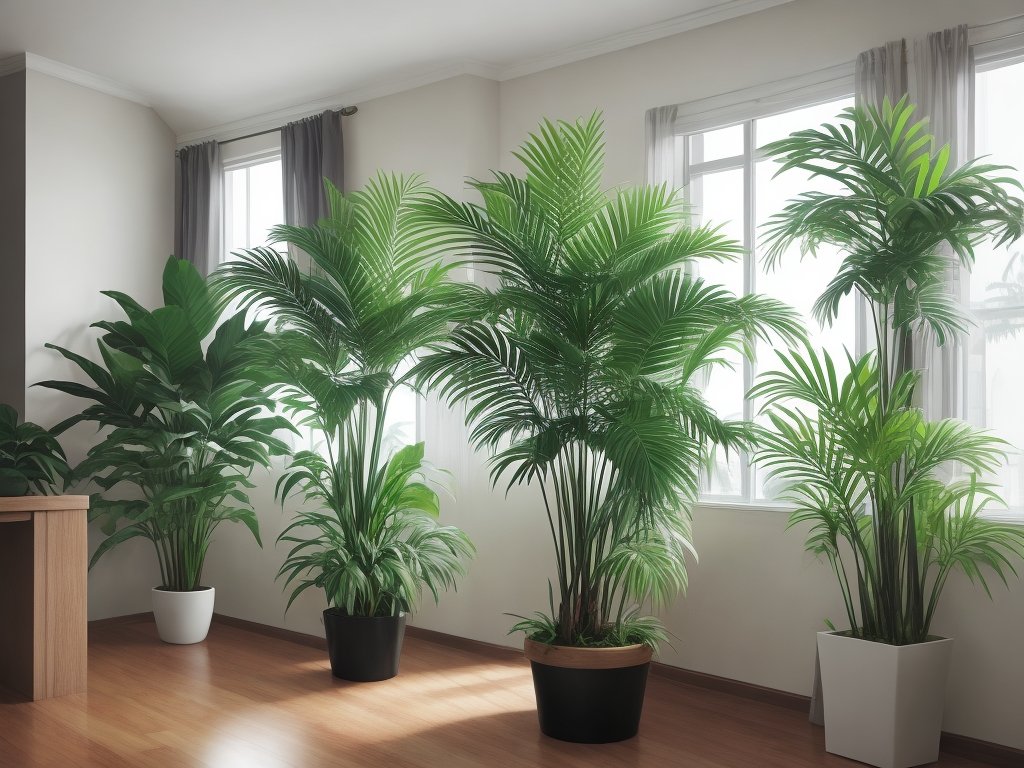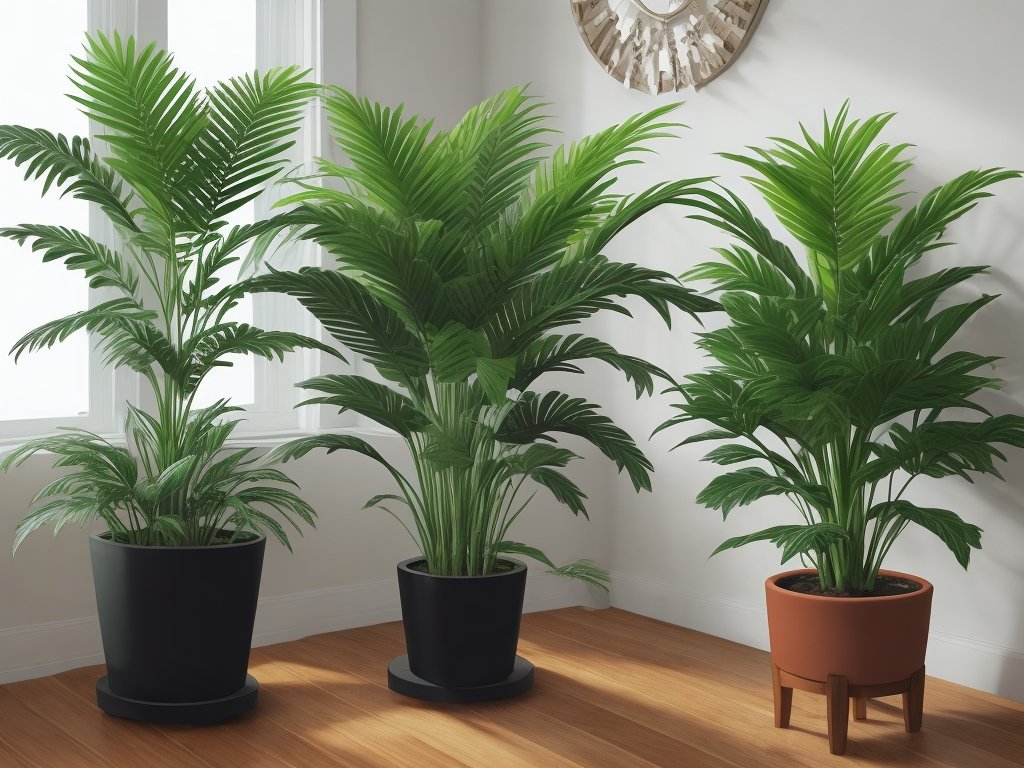Parlor Palm And Local Plant Nurseries: Expert Insights!
Key Takeaways:
- Parlor palms are a popular choice for indoor plants due to their low maintenance and ability to thrive in low light conditions.
- Local plant nurseries are a great option for purchasing parlor palms as they often offer a wide variety of healthy and well-maintained plants.
- When purchasing a parlor palm from a local plant nursery, ensure that the plant is free from pests or diseases and has been properly cared for.
- Local plant nurseries can provide valuable guidance on the care and maintenance of parlor palms, helping you ensure the long-term health and beauty of your plant.
Are you looking to bring a touch of nature into your home?
Interested in adding some greenery to your living space?
Look no further than the parlor palm! This elegant and easy-to-care-for plant is the perfect addition to any room.
But where can you find a high-quality parlor palm?
Local plant nurseries are your best bet! In this article, I’ll discuss the benefits of visiting local plant nurseries, provide tips for choosing a healthy parlor palm, and offer insights on maintaining and growing your new plant.
Get ready to transform your space into a lush oasis!
| Aspect | Parlor Palm | Local Plant Nurseries |
|---|---|---|
| Availability | Widely available | Varies depending on location |
| Cost | Relatively affordable | Variable pricing |
| Growth | Slow-growing | Varies depending on plant type |
| Care | Low maintenance | Depends on plant type, but generally low maintenance |
| Appearance | Elegant, feathery leaves | Varies depending on plant type |
Finding Local Plant Nurseries
Looking for a local plant nursery? Here’s how to find one near you.
Why Visit Local Plant Nurseries?
When it comes to buying plants, local nurseries are the way to go. Here’s why:
- Wide selection: Nurseries offer a variety of plants to choose from, including rare and exotic species that you might not find elsewhere.
- Expert advice: The staff at nurseries are knowledgeable about plants and can provide guidance on care, maintenance, and suitability for your specific needs.
- Quality assurance: Plants at nurseries are usually healthier and better cared for compared to those at big-box stores, increasing your chances of success.
- Support local businesses: By purchasing from local nurseries, you’re supporting your community and helping small businesses thrive. Plus, you might discover hidden gems in your area.
- Personal touch: Nurseries often have passionate owners and staff who genuinely care about plants. They can offer personalized recommendations and assist you in finding the perfect plant for your space.
Visiting local plant nurseries is not only a practical choice, but also a fun and rewarding experience. So, skip the online shopping and head to your nearest nursery for all your plant needs!

Online Resources for Finding Local Plant Nurseries
If you’re looking for local plant nurseries, there are several online resources you can use. Websites like Yelp, Google Maps, and PlantMaps allow you to search for nurseries in your area.
You can also check out social media platforms like Facebook and Instagram, where many nurseries have pages showcasing their plants and services.
Additionally, plant-specific forums and online communities often have recommendations and discussions about local nurseries. Take advantage of these resources to find the perfect nursery for your plant needs!

Visiting the Nurseries in Person
When visiting nurseries in person, it’s important to observe the overall health and condition of the plants. Check for any signs of pests or diseases.
Ask the staff about the care requirements and specific needs of the plants you’re interested in.
Take your time to explore different nurseries and compare prices and options.

Questions to Ask at the Plant Nursery
When visiting a plant nursery, it’s important to ask the right questions. Here are a few to consider:
- Do you have the specific plant I’m looking for?
- What are the care requirements for this plant?
- Is this plant suitable for my indoor or outdoor space?
- How big will this plant grow over time?
- Are there any potential pests or diseases I should be aware of?
- Can you give me any tips or advice for successfully growing this plant?
- What is the price of the plant and any additional fees (e.g., pots, delivery?
- Do you offer any warranties or guarantees on your plants?
- Are there any ongoing promotions or discounts available?
- Can I see a demonstration of how to properly water and care for this plant?
These questions will help you gather important information and ensure that you leave the nursery with the right plant and the knowledge to care for it properly.
Buying a Parlor Palm from a Local Plant Nursery
When buying a Parlor Palm from a local plant nursery, consider the health and condition of the plant before making your purchase.
Choosing a Healthy Parlor Palm
Choosing a healthy parlor palm is essential for its long-term survival. When selecting a parlor palm, look for plants with lush green leaves, without any discoloration or damage.
Check for pests, like spider mites or scales, on both the leaves and stems.
Ensure that the plant is well-rooted, with no signs of root rot or wilting. Additionally, consider the size of the plant and its suitability for your indoor space.
Following these guidelines will help you find a healthy parlor palm that will thrive in your home.
Potting and Repotting the Parlor Palm
To pot or repot your Parlor Palm, choose a pot slightly larger than the current one. Use well-draining soil and ensure the pot has drainage holes.
Gently remove the palm from its current pot, loosen the roots, and place it in the new pot.
Fill any gaps with fresh soil. Water thoroughly and place in a suitable location.
Repotting is typically done every 1-2 years.

Transportation and Delivery Options
Transporting and delivering a Parlor Palm from a local plant nursery can be a simple process.
You can either transport it yourself by placing it securely in your car or opt for delivery services offered by the nursery.
Some plant nurseries may offer delivery within a certain radius for a fee.
Just make sure to inquire about the delivery options available and choose the one that suits you best.
Maintaining and Growing Your Parlor Palm
To maintain and grow your Parlor Palm successfully, you need to focus on watering and feeding, providing optimal light conditions, controlling temperature and humidity, and pruning and propagating the plant.
Watering and Feeding the Parlor Palm
Water your Parlor Palm thoroughly when the top inch of soil feels dry. Ensure good drainage and avoid overwatering.
Feed your plant with a balanced liquid fertilizer every 2-3 months during the growing season.
Dilute the fertilizer as per instructions to avoid damaging the plant.
Providing Optimal Light Conditions
To provide optimal light conditions for your Parlor Palm, place it in a bright location with indirect sunlight. Avoid placing it in direct sunlight as it can scorch the leaves.
North or east-facing windows are usually the best spots.
If your home doesn’t have sufficient natural light, you can also use artificial grow lights to supplement the light requirements.
Controlling Temperature and Humidity
Controlling temperature and humidity is important for the health of your parlor palm.
Keep the temperature between 60-80°F (15-27°C), avoiding sudden fluctuations.
Maintain humidity between 40-50% by using a humidifier or placing a tray of water near the plant.
Avoid drafts and direct sunlight, as they can affect temperature and humidity levels.
Pruning and Propagating the Parlor Palm
To prune your Parlor Palm, simply remove any dead or yellowing leaves by cutting them off at the base.
This will help keep the plant looking tidy and prevent disease.
Propagating the Parlor Palm can be done through division or stem cuttings.
I recommend dividing the plant by carefully separating the root ball into smaller sections and potting them individually.
Stem cuttings can also be taken by selecting a healthy stem and placing it in water or moist soil until roots develop.
Frequently Asked Questions
How often should I water my Parlor Palm?
Water your Parlor Palm when the top inch of soil feels dry to the touch.
Stick your finger in the soil and if it feels moist, hold off on watering.
Avoid over-watering, as this can lead to root rot.
Remember, it’s better to underwater than to overwater your Parlor Palm.
Can Parlor Palms survive in low light conditions?
Yes, Parlor Palms can survive in low light conditions.
They are known to thrive in shady areas and can tolerate low light levels.
However, it’s important to note that they still require some indirect light to grow properly.
Place them near a north-facing window or provide artificial light if needed.
How do I prevent pests from infesting my Parlor Palm?
To prevent pests from infesting your Parlor Palm, regularly inspect the plant for any signs of infestation, such as webbing, small holes, or sticky residue.
Remove any affected leaves or stems immediately.
Keep the plant clean by wiping the leaves with a damp cloth.
Avoid overwatering and make sure the soil is well-drained.
Consider using natural pest control methods, such as neem oil or insecticidal soap, to treat any pests that may appear.
When is the best time to repot a Parlor Palm?
The best time to repot a Parlor Palm is in the spring or early summer when the plant is actively growing.
Avoid repotting during the winter months, as the plant is in a dormant state.
Repotting during the optimal time will help minimize stress on the plant and promote healthy growth.
Remember to choose a slightly larger pot with good drainage and use a well-draining potting mix.
Final Verdict
Finding and visiting local plant nurseries is a great way to add a healthy and beautiful parlor palm to your collection.
Online resources can help you locate the nurseries in your area, and visiting them in person allows you to see the quality of their plants firsthand.
Asking the right questions at the nursery ensures you choose a healthy parlor palm and receive valuable care tips.
Once you bring your parlor palm home, proper maintenance is key – providing the right amount of water, light, temperature, and humidity will help it thrive.
Pruning and propagating the palm allows you to shape and expand your plant collection.
And if you have any questions, refer to our FAQs for expert advice.
So why wait?
Start your journey to becoming a parlor palm expert today by exploring your local plant nurseries.
Happy gardening! Conclusion word count: 150 words.







